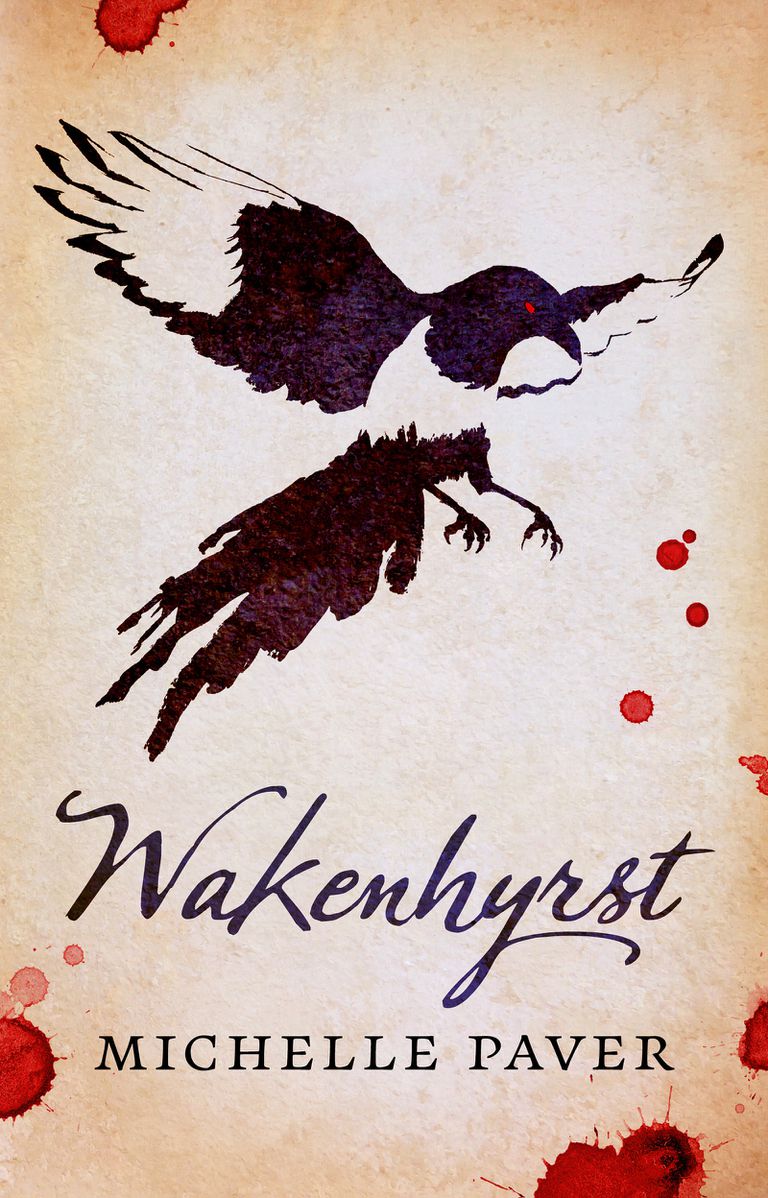
This was my first Paver read having heard some good things about her, and it thrust me straight into a solid Gothic historical yarn with some genuinely creepy moments!
The novel is perhaps misnamed: it focuses on the house Wake’s End set beside the local fen, some three miles from the village of Wakenhyrst; and, like its protagonist, Maud Stearne, the narrative rarely leaves that house which creates a deliciously taut atmosphere. And as to the relationship of the house and the fen, it carries echoes of the conflict between the human and the natural, the rational and the fairytale, as the fen abounded with “ferishes and hobby-lanterns” which “ull hook you in to a miry death” if you don’t take care. And like any taboo forbidden place, it was immediately appealing to the child Maud.

Set at the turn of the nineteenth century, Maud is a nine-year old at the start of the novel and sixteen at the conclusion of her narrative, a girl on the cusp of adulthood in a world on the cusp of modernity, but still treated as a child of the Victorians by her father, the historian Edmund Stearne, and other patriarchal authority figure in society around her: the rector, Mr Broadstairs, and the doctor, Dr Grayson.
Initially, the novel seemed very family centred as Maud lies awake listening to her mother’s “groaning” at the end of her “illness” – euphemisms for her pregnancy – and not fully understanding save for the fact that
The best way for a groaning to end was with a bloody chamberpot, as that was soonest over. Second-best was a dead baby and worst was a live one, because Maman cried when it died – which it always did. Maman was careful never to cry in front of Father, as he didn’t like it.
Father was a very distant and cold character, quietly tyrannical in his running of the house, against which Maud rebelled, and focussed on his work on the writings of an obscure female mystic from the fifteenth century, Alice Pyett; Maman suffers from the triple disabilities of being female, foreign and “an inherited flaw” impeding her ability to bear children. Or perhaps a desperate attempt to retain some bodily autonomy in the face of a husband who refuses contraceptives and refutes the medical advice that he ought not to expect her to pay the “debt of matrimony”, at least “not every night”. Hence, perhaps, the mysterious tonics and strange practices with dead men’s hands. The actions of Father are controlling and abusive as he
had decreed what Maman ate, read, did and thought. If he’d ever given her a choice in anything, he’d been the one who decided what she could choose from.
These early chapters were well written and engaging enough, but very much the preamble to the core narrative which begins when Father, now widowed and bedding the maid, Ivy, with renewed vigour, discovers a painted eye in the grass of the churchyard, from which clue a painting is discovered and dated. The Wakenhyrst Doom, a depiction of The Last Judgment with a savage lascivious demon lurking in the corner, joyfully torturing a range of sinners in the style of Hieronymous Bosch, described as
a scaly little devil in one corner. He is naked, squatting with legs indecently splayed, and though he has hooked a female sinner with his spear, he isn’t leering at her, but at us.
It is with the discovery of the Doom that Father’s lurking paranoia and monomania become patent as a creeping suspicion that the fen is unhealthy and dangerous leaks into disturbing dreams, half-seen shadows slipping across the garden, mysteriously opened windows and waterweed “slimy and soft, like drowned skin” materialising in his bedroom. Eventually, it develops into an obsessive belief that what he perceived was not an over-ambitious fenland creature but a demon seeking him out and the zealous belief that he has been chosen to defeat it. It is no spoiler – this fact is explicitly stated in the framing chapters – that the outcome was that Edmund Stearne, Father, was
a rich landowner and respected historian, a man of spotless reputation – until one summer’s day when he slaughtered the first person he came across in the most bizarre and horrible way…
The coroner said the first blow was lethal, the ice-pick piercing the eyeball and brain. Let’s hope so, because Edmund chiselled back the scalp, hacked out a chunk of skull and dug around in the grey matter as if he was looking for something. And Maud saw the whole thing.
Like many Gothic novels, Wakenhyrst, layers its narratives like a concertina: our framing narrative settles in 1966 and a series of letters between Maud and a Dr. Robin Hunter in which Maud, angered by a libellous article and in need of money to restore a damaged roof, considers selling her story in order to raise funds and set the record straight. Within Maud’s story itself we also have fragments of Stearne’s private diary recording his descent into monomania, and extracts from his work, a translation of the life of Alice Pyett, and these stories echo and rebound around each other, creating coincidence and self-serving parallels with the one image, the painting of the Wakenhyrst Doom, linking them all together.
Secrets unfold unwillingly through the narrative and revelations occur as Paver balances on the tightrope between the Gothic supernatural and the rational with ease.
It did not, for me, quite match up to novels like Sarah Schmidt’s See What I Have Done or Sarah Perry’s Melmoth, with which it shares many sensibilities, but not quite the same physical and gut wrenching emotional power or intense sensual impact. Wakenhyrst is very much Maud’s story, rather than the readers’ story and that, perhaps, is what the Sarahs Perry and Schmidt managed to do: create Gothic stories which exploited their readers’ morals and sense of guilt, rather than simply reveal their characters’ guilt.
Ratings:
Overall: ⭐⭐⭐⭐
Characters: ⭐⭐⭐⭐
Plot / Pace: ⭐⭐⭐⭐
Language: ⭐⭐⭐⭐
Publisher: Head of Zeus
Date: 4th April 2019
Available: Amazon


[…] Wakenhyrst by Michelle Paver, a recommendation from a work colleague with a very gothic sensibility and who, I am sure, is enjoying the BBC Dracula at the moment! […]
LikeLike
[…] to lend me her entire Hammer Horror DVD collection. That is telling as the Paver novel I read was Wakenhyrst: creepy, Gothic, […]
LikeLike
[…] Wakenhyrst, Michelle Paver […]
LikeLike
[…] Wakenhyrst, Michelle Paver […]
LikeLike
[…] Satis House to Eel Marsh House, from High Place to 29 Barton Road, from Dracula’s castle to Wakenhyrst to Lockwood Manor, I love them […]
LikeLike
[…] Wakenhyrst, Michelle Paver […]
LikeLike